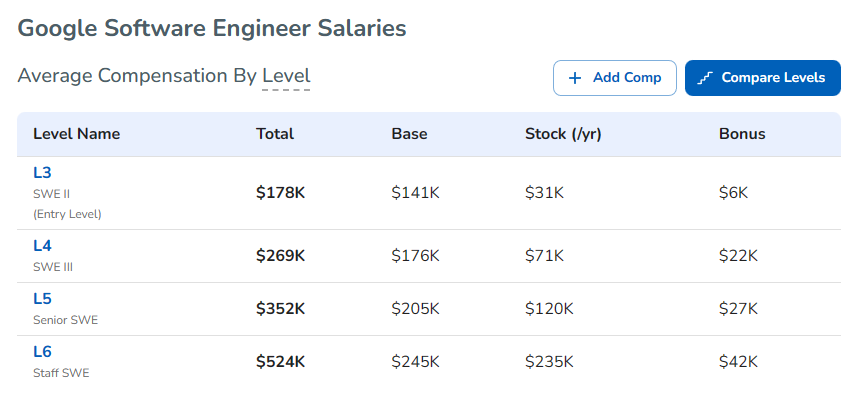Picture this: your company is on the brink of a groundbreaking innovation, but one crucial decision stands between you and success. In the fast-paced, technology-driven world we live in, businesses must navigate the ongoing debate of in-house developers vs. consultants to stay ahead of the curve. As the global demand for skilled software engineers soars, organizations are left grappling with the advantages and drawbacks of each approach, aiming to craft the perfect strategy tailored to their unique needs. The quest for the ideal balance between in-house talent and external resources is a high-stakes game, with long-term business success hanging in the balance.
Hire the best developers in Latin America. Get a free quote today!
Contact Us Today!Making The Right Decision
In the rapidly evolving world of technology, the importance of making informed decisions regarding software development talent cannot be overstated. As businesses increasingly rely on digital solutions to gain a competitive edge, the choice between hiring full-time developers and outsourcing has significant implications for a company’s long-term success.
Understanding In-house Developers
In the dynamic world of business, understanding the value and role of full-time developers is essential for companies looking to make informed decisions regarding their software development needs. Full-time developers are dedicated, in-house professionals who work exclusively for a single organization, contributing their skills and expertise to the company’s projects and objectives.
There are several key benefits to hiring full-time developers:
- Stability and commitment: Full-time developers are committed to the organization’s long-term success. They invest their time and effort into the company’s projects and growth, fostering a sense of loyalty and dedication that can lead to increased productivity and a more cohesive team dynamic.
- Better understanding of company culture and objectives: By working within the organization, full-time developers gain a deep understanding of the company’s culture, values, and goals. This knowledge enables them to develop software solutions that align closely with the organization’s strategic vision, ultimately driving more impactful results.
- Ongoing training and skill development opportunities: Employing full-time developers allows companies to invest in the ongoing professional growth of their staff. Through continuous training and development programs, in-house developers can hone their skills, stay current with industry trends, and ultimately contribute to the company’s competitive advantage.
What To Consider…
Despite these benefits, there are also potential drawbacks to consider when hiring full-time developers:
- Higher overhead costs: Employing full-time developers typically entails higher overhead costs, including salaries, benefits, and office space. These expenses can be a significant financial commitment, particularly for startups or smaller businesses.
- Limited flexibility in scaling up or down: With a fixed number of in-house developers, companies may struggle to quickly adapt their workforce to meet fluctuations in project demands. This can lead to increased pressure on existing staff during busy periods or underutilized resources during lulls.
- Longer recruitment and onboarding process: Hiring full-time developers often involves a lengthy recruitment and onboarding process. Finding the right candidate with the appropriate skills and cultural fit can be time-consuming, potentially delaying projects or leaving existing staff stretched thin.
Economy of Fulltime Developers
The actual cost of full-time developers extends beyond their base salary, encompassing a range of additional expenses that companies must consider. For instance, Google’s median annual salary for a software engineer is around $160,000, while Apple pays its engineers a median annual salary of approximately $155,000.

However, the total cost of employing these professionals includes payroll taxes, health insurance, retirement benefits, and workspace expenses. When taking these factors into account, the overall cost for a software engineer at Google or Apple can easily exceed $200,000 per year. It’s crucial for organizations to carefully assess these financial commitments and weigh them against their budget and long-term goals when deciding whether to hire full-time developers.
Exploring Outsourcing Options
Outsourcing is a popular alternative to hiring full-time developers, offering businesses the option to work with external companies or freelancers to handle their software development needs. Let’s take a closer look at outsourcing and its benefits:
- Access to diverse talent and expertise: Outsourcing enables organizations to tap into a vast pool of global talent, providing access to specialized skills and expertise that may not be readily available in-house. This can be particularly advantageous for niche projects or when exploring cutting-edge technologies.
- Cost savings and flexibility: Outsourcing can offer significant cost savings for businesses, particularly when working with developers from regions with lower labor costs. Additionally, the flexibility to scale projects up or down based on demand allows companies to better manage their financial resources and avoid the overhead costs associated with full-time employees.
- Speedy recruitment and deployment: With outsourcing, companies can quickly locate and engage skilled developers, bypassing the time-consuming process of recruiting, interviewing, and onboarding full-time employees. This advantage can be critical for businesses with tight deadlines or rapidly changing project requirements.
However, outsourcing also comes with potential challenges that businesses must be prepared to address:
- Communication and cultural differences: Outsourcing may involve working with developers from diverse cultural backgrounds and different time zones, which can lead to communication challenges. Overcoming these obstacles requires clear communication channels and a willingness to bridge any gaps that may arise.
- Intellectual property and data security: Working with external developers can expose businesses to risks related to intellectual property protection and data security. To mitigate these risks, companies must establish strict security protocols and legal agreements to safeguard their assets.
- Limited control and potential impact on company culture: Outsourcing may result in less direct control over project development and can impact the overall company culture. To maintain a cohesive work environment and ensure the success of outsourced projects, businesses should foster strong relationships with their external partners and maintain open lines of communication.
By The Numbers
Comparing the actual costs of an outside consultant and a full-time developer can reveal surprising insights. For instance, consider a full-time developer named Emily, who earns $75 per hour, or $156,000 per year. When accounting for additional expenses, such as benefits, taxes, and overhead, Emily’s true hourly cost to the company is closer to $150 per hour ($75 x 2), totaling around $312,000 per year ($156,000 x 2). This figure demonstrates that hiring a full-time developer may not be as cost-effective as initially perceived. In contrast, an outside consultant’s fees might seem more expensive upfront, but they often do not include the ongoing expenses associated with full-time employees, making them a more financially viable option in certain situations. By comparing dollar figures, businesses can make informed decisions about which approach best aligns with their budget and objectives.
Due Diligence
While outsourcing offers an array of benefits, including access to diverse talent, cost savings, and speedy recruitment. However, businesses must also consider potential challenges, such as communication and cultural differences, intellectual property concerns, and limited control when exploring this option. To ensure a successful outsourcing experience, it’s crucial for companies to conduct thorough due diligence when selecting an external development partner. This includes researching the partner’s reputation, track record, and expertise, as well as evaluating their communication style and ability to align with the company’s objectives. By taking these precautionary steps, organizations can mitigate risks and make the most of the opportunities that outsourcing presents.
In Conclusion
As businesses weigh the pros and cons of hiring in-house employees versus consultants, it’s crucial to take into account all hidden costs associated with each option to make informed decisions. While there’s no universal solution that fits every company or situation, being aware of the factors outlined in this article can help you make the most financially sound choice for your organization and team. By carefully evaluating the costs and benefits, you can ensure your business thrives and remains competitive in today’s fast-paced market.




